🔖The Gateway to Wild Water: Introducing Gal Oya National Park
Gal Oya National Park stands as one of Sri Lanka’s most compelling yet least-visited wilderness destinations, offering a unique safari experience unparalleled in the country. The park is distinguished by one extraordinary feature: it is explicitly the only national park in Sri Lanka where visitors can undertake a dedicated boat safari. This positioning immediately establishes Gal Oya as an essential destination for discerning travelers seeking an ecologically distinct adventure far removed from the crowded jeep trails of the island’s southern parks.
The heart of Gal Oya is not a river or a lagoon, but a vast, shimmering inland sea known as the Senanayake Samudra. This enormous body of water, the largest reservoir in Sri Lanka, forms an archipelago setting where wildlife viewing takes place entirely from the vantage point of a boat. The boat safari typically lasts approximately two to three hours, navigating the maze of submerged hilltops that now form dozens of islands, providing opportunities to spot diverse aquatic and terrestrial wildlife, often capped with a delightful snack, tea, or coffee, accompanied by a panoramic view of the lake.
A. Geographical and Historical Context: The Making of the Giant Lake
Gal Oya National Park, encompassing over 25,000 hectares, is recognized as the third largest national park in Sri Lanka and is situated in the southeastern Ampara District, cradled between Siyabalanduwa and Ampara. The park’s creation is intrinsically linked to the history of the nation’s post-independence development. The centerpiece, the Senanayake Samudra (sometimes called the Inginiyagala Reservoir), was established by successfully damming the Gal Oya River and several smaller tributaries between mountains near Inginiyagala.
Construction of this iconic earthen dam began in 1949 and was officially completed in 1953, spearheaded by Sri Lanka’s first prime minister, D. S. Senanayake. The reservoir was a core component of the Gal Oya multipurpose irrigation system, designed fundamentally to irrigate the extensive dry lands of the eastern region. Consequently, the national park was established primarily to protect this vital catchment area and its surrounding forests. This historical context—a major mid-20th-century irrigation and development project—explains why the park’s ecology is so distinctive; the habitat is fragmented and defined by a relatively new, artificial aquatic environment.
B. The Modernity of the Wild and the Remote Advantage
The unusual ecological situation—where the central feature is a massive, man-made reservoir—means the wildlife experience involves exploration within a fragmented, adapted habitat, rather than a millennia-old natural lake. The numerous islands encountered on the safari are, in fact, the tops of hills that were submerged when the Gal Oya Valley was flooded to form the Senanayake Samudra. This fragmentation is the underlying reason for the park’s most spectacular wildlife display: the sight of elephants swimming between these isolated land masses, a necessary adaptation to access various food and social resources.
For the traveler, this remote and logistically challenging location serves as its own reward. Accessing Gal Oya National Park demands time and effort. Public transit routes from key tourist hubs like Ella or Colombo are time-intensive, often requiring 11 to 13 hours and multiple transfers via bus terminals or long train journeys to Galoya Junction. This inherent difficulty in access contributes directly to Gal Oya’s status as a well-preserved and lesser-visited sanctuary compared to Sri Lanka’s more famous parks. The relative solitude and tranquility encountered here appeal specifically to the conscientious traveler seeking authentic, unique, and unspoiled natural experiences.
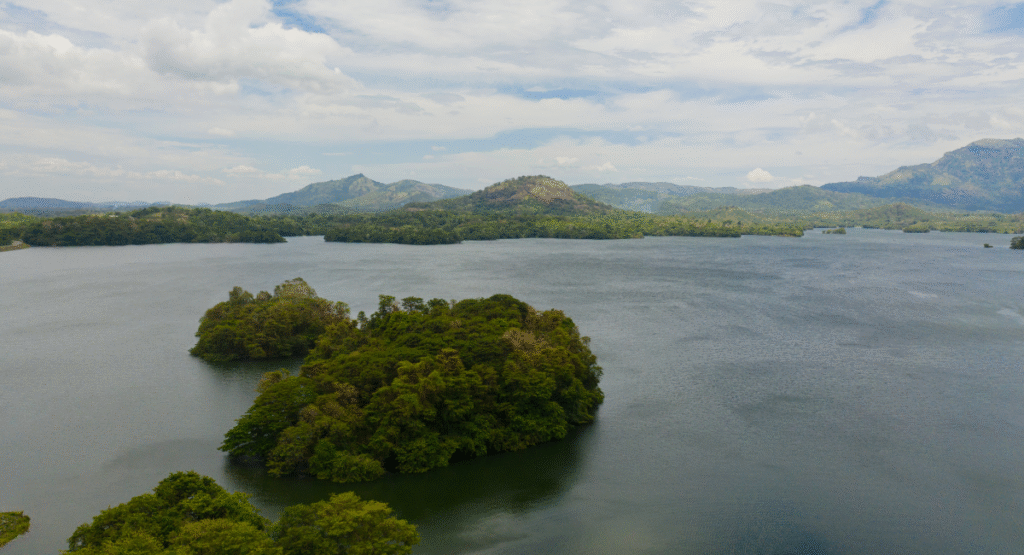
🔖The Senanayake Samudra Boat Safari: An Amphibious Encounter
The core appeal of Gal Oya lies in its unparalleled aquatic safari, offering perspectives on wildlife behavior impossible to capture elsewhere on the island. The boat safari transforms the traditional wildlife viewing experience from traversing dusty tracks to silently gliding across open water.
A. The Crown Jewel: Witnessing the Swimming Giants
The most celebrated and signature experience in Gal Oya is the rare opportunity to witness Sri Lankan elephants swimming across the reservoir. The Senanayake Samudra’s configuration—a vast expanse dotted with islands—forces these majestic animals to traverse the water to move between different feeding and resting grounds.
Sri Lankan elephants are recognized as excellent swimmers, displaying a remarkable adaptation: they utilize their trunks as effective natural snorkels to breathe while fully submerged or traveling long distances. Biologists theorize that this ability is deeply ingrained, possibly dating back to the first elephants that swam across the ocean from India to inhabit the island. During the boat safari, visitors are afforded an unparalleled, close-up perspective of these animals as they gather near the water’s edge to drink, socialize, or, most uniquely, as they actively swim from one island to another.
B. Optimal Timing and Seasonal Variations
Maximizing the chances of witnessing these behaviors requires careful attention to the seasons, as the water level profoundly influences elephant movement and concentration.
The timing of a visit dictates the specific type of elephant encounter a traveler is likely to have. The period between March and July is considered the golden window for observing the truly unique phenomenon of elephants actively swimming between the lake’s islands. This period, which often corresponds with the wet season, sees elephants gathering near waterholes to hydrate and engage socially.
Outside of this peak time for swimming spectacle, the general seasonality still yields highly rewarding viewing:
- Green Season (January to May): The reservoir is at its fullest during the Green Season. Although afternoon and nighttime rains are common, this abundance of water supports spectacular birdlife, with numerous migratory species taking residence.
- Dry Season (June to December): As the year progresses into the Dry Season, the water levels subside significantly. This process exposes large portions of the lake floor, allowing fresh grass to grow. This exposed vegetation acts as a powerful lure, attracting large herds of elephants who congregate to feed on the nutrient-rich new growth. While swimming sightings may decrease during this time, the density of herds seen feeding is often higher. Days are typically hot, and nights remain cool.
Understanding these seasonal nuances is essential for planning: the traveler seeking the iconic swimming event should aim for March to July, while the traveler prioritizing the largest concentration of feeding elephants may prefer the dry season months.
Boat safaris are generally scheduled to maximize wildlife activity, with specific departure times often available in the early morning (around 6:30 am), mid-morning (9:30 am), and late afternoon (3:30 pm).
C. Beyond Elephants: Island and Aquatic Wildlife
While elephants dominate the attention, the Senanayake Samudra ecosystem is a complex web of life. The reservoir and its banks are frequently populated by freshwater crocodiles, which can often be observed basking on the muddy shores or resting near the islands. Deer and various other terrestrial mammals are also commonly seen grazing close to the water, relying on the lake for survival.
The fragmentation of the habitat due to the reservoir has created a unique ecology on the hundreds of islands. These islands, which are submerged mountaintops, are crucial to the park’s biodiversity. The varied microclimates and isolation support a rich array of endemic flora, including rare medicinal plants. The boat safari is therefore the necessary mode of transport to fully appreciate the dynamic, fragmented nature of this man-made protected area.
🔖Gal Oya’s Deep Biodiversity and Landscape
Gal Oya National Park is celebrated by researchers and ecologists for its contribution to Sri Lanka’s biodiversity, sheltering numerous endemic species across its diverse habitats of dense evergreen forests, sprawling savannas, and rugged mountains. The park is home to 32 species of terrestrial mammals.
A. Flora and Forest Types: A Medicinal Landscape
The park’s unique vegetation includes rare plants critical to traditional Sinhalese medicine (Ayurveda). Dominant tree species found within the evergreen forest include Halmilla (Berraya Cordifolia), Etamba (Mangifera Zeylancia), and Kalumediriya (Diopyros Chaetocarpa). Most notably, the valuable Ebony (Diospyros Ebenum). The tree, known for its dense, dark wood, is found within the park boundaries. The rich flora adds a layer of heritage and ecological importance far beyond the headline wildlife sightings.
B. Mammalian Rarity and Abundance
The extensive protected area is vital for its resident elephant population, estimated to be well over 200 individuals. Beyond the iconic swimming giants, the park serves as a sanctuary for several key mammalian species, including the elusive Sri Lankan leopard, sloth bears, water buffalo, and various species of deer. While leopard sightings are rare, the presence of these large predators confirms the health and integrity of the overall ecosystem.
C. A Birdwatcher’s Paradise: Focus on Endemics
For ornithologists and birding enthusiasts, Gal Oya’s boat safari offers exceptional viewing opportunities, especially during the peak migratory season (January to May). The park hosts a significant concentration of Sri Lanka’s endemic avifauna. Species commonly sought and found within the park include the distinctive Crimson Barbet, the vibrantly colored Ceylon Green Pigeon, the recognizable Ceylon Grey Hornbill, and the endemic babblers such as the Scimitar Babbler and Orange Billed Babbler. Further endemic species such as the Sri Lankan Wood-Shrike, Ceylon White Eye, Ceylon Hill Myna, Ceylon Jungle Fowl, and Spur Fowl reinforce the park’s reputation as a crucial biodiversity hotspot.
🔖The Vedda People: Stewards of the Forest and Guardians of Heritage
Gal Oya National Park offers a profound dimension beyond wildlife: a respectful cultural encounter with the Vedda people, recognized as the island’s last indigenous community.
A. Who are the Veddas? Aboriginal Inhabitants
The Vedda, often referred to as ‘forest dwellers,’ hold immense historical significance as the aboriginal people and original inhabitants of Sri Lanka, predating the arrival of the Aryans. Historically, Vedda settlements spanned wide areas, including the Uva, North Central, Eastern, and Sabaragamuwa Provinces. Contemporary cultural tours often focus on communities such as those near Dambana and Rathugala.
The traditional Vedda way of life is deeply intertwined with nature. They maintain rich cultural customs, rituals, and profound ecological knowledge, including ancient hunting and gathering techniques. Their spirituality often revolves around the worship of dead ancestors and the practice of singing songs to forest spirits to ensure safe passage during travel. They are generally described as an open and friendly people, possessing extensive knowledge of the natural environment that surrounds them.
B. The Cultural Encounter and Traditional Knowledge
Tours designed to engage with the Vedda community aim to educate visitors on their way of living. These experiences may involve guided treks where traditional customs and survival skills are demonstrated. During the seasonal honey harvest, visitors might even have the unique opportunity to observe the Vedda harvesting honey from giant natural combs high in the trees.
C. Navigating a Delicate Balance: Displacement and Modernity
Travelers need to approach the cultural visit with a nuanced understanding of the community’s complex modern reality. The establishment of the Senanayake Samudra and subsequent large-scale development projects initiated significant land fragmentation and displacement for the Vedda population. This loss of traditional land and resources directly challenged their identity, which had historically been defined by their relationship with, and use of, the natural environment.
In the face of political and economic marginalization, loss of land, limited access to education, and widespread unemployment, the Vedda community has been forced to redefine its identity within new geopolitical and socio-economic contexts. Researchers observe that they pursue two key survival strategies: integration into mainstream Sinhalese society and a form of re-indigenization focused on tourism development. These pressures result in ongoing challenges related to livelihood, poor health, and the sheer pressure of modernization.
For the modern traveler, this history carries a profound implication. The Vedda community’s engagement in tourism is not simply an offering of leisure but a critical strategy for cultural and economic survival following decades of displacement and marginalization. Consequently, visitors must adjust their expectations, as the complex livelihood of the Vedda has resulted in the modernization of certain cultural aspects. Those expecting a purely untouched ‘tribal’ experience may be disappointed; the advised approach is to prioritize learning and tactical sensitivity over the pursuit of an idealized notion of “pristine authenticity”.
D. Ethical Tourism: Guidelines for Respectful Engagement
Engaging respectfully with the Vedda people requires adherence to local cultural sensitivities. The encounter must be viewed as an educational exchange, supporting their self-determination, rather than a spectacle.
Visitors should adhere to general Sri Lankan etiquette :
- Greetings: Use a warm Ayubowan (meaning “long life”), accompanied by the palms joined together.
- Respect: Elders should always be treated with marked respect.
- Physical Contact: Public displays of affection are discouraged. It is advisable to avoid shaking hands unless the local person initiates the gesture, as men and women do not typically touch in public.
- Attire: Dress modestly, particularly when visiting local communities.
🔖Planning Your Gal Oya Expedition: Logistics and Essential Information
Due to its remote location and specialized activities, planning a trip to Gal Oya requires detailed foresight regarding travel, accommodation, and complex fee structures.
A. Access and Transit: Getting to the Remote East
Gal Oya National Park’s location in the Ampara District makes it challenging to reach via standard tourist circuits. The journey via public transport from major hubs is long. A trip from Ella, for instance, can take nearly 11 hours by combining bus and vehicle transfers, or almost 13 hours if using the train route to Galoya Junction via Polgahawela. Given the intensive transit time, most high-end travelers opt for private transfers. While convenient, these can be costly; for example, transfers between Colombo Airport (CMB) and Gal Oya Lodge can start from $171 USD.
B. Accommodation Options
The accommodation sector in Gal Oya is geared toward offering an immersive, integrated experience. Options range from luxury lodges to high-quality glamping.
- Wild Glamping Gal Oya: Offers an immersive glamping experience, provided by the Thema Collection, allowing guests to stay close to nature.
- Galoya30 Hotel & Safari: Known for its blend of luxury lodging, spacious rooms, and guided safari experiences available right from the location.
Many properties offer all-inclusive packages that bundle accommodation, meals, boat safaris, and cultural visits. For example, a one-night package at a reputable lodge can start around $505 USD, reflecting the necessity of securing specialized services in this remote area.
C. Costs and Booking: Understanding the Fee Structure
A critical component of planning a Gal Oya safari is understanding the three-tiered fee structure: the mandatory Department of Wildlife Conservation (DWC) Park Entrance Fee, the cost of boat hire, and the additional charge levied by the tour operator/guide.
While specific, recent official DWC fees for Gal Oya are not always published separately, the prevailing rate for foreign adult visitors across comparable major national parks (Yala, Udawalawe, Wilpattu, etc.) is standardized at approximately $25 USD per adult. This rate should be budgeted for by all foreign visitors.
The cost of the boat safari itself is highly variable, depending on the operator and group size. Private safari prices (3 hours) booked through operators can start as low as $27 USD (though this price is highly variable based on the number of people in the group) and rise to $67–$84 USD or more for guaranteed bookings. It is vital for travelers to clarify whether any quoted price includes the compulsory DWC entrance fee or if that must be purchased separately.
The table below summarizes the estimated costs for foreign visitors:
Table 1: Estimated Gal Oya Park Fees and Tour Costs (Foreign Visitors)
| Service/Fee Type | Estimated Cost Range (USD) | Payment Structure/Notes |
| DWC Park Entrance Fee (Adult) | ~$25 | Required per person. Standard rate based on comparable major parks. |
| Group Boat Safari (3-hour operator tour) | $67 – $84+ | Varies significantly by inclusion, operator, and group size. |
| Private Boat/Guide Hire (Operator) | From $27 (Group dependent) | Often requires additional DWC fees; confirm inclusions. |
| All-Inclusive 1 Night Package | Starts $505–$520 | Covers luxury accommodation, meals, safari, and potential cultural walks. |
D. Practical Tips and Preparation
To ensure a successful trip, timing the safari to coincide with the animals’ most active hours is paramount. Early morning (6:30 am) and late afternoon (3:30 pm) safaris generally offer the best chances of viewing wildlife as they converge at the water’s edge.
Preparation essentials include necessary sun protection, sufficient drinking water, and effective insect repellent. Given the unique, intimate nature of the cultural visits, it is recommended that travelers pack modest attire appropriate for community encounters, ensuring adherence to the cultural guidelines of the region. Due to the park’s relative isolation and the reliance on specific boat services, pre-booking all safaris and accommodation well in advance is highly recommended to secure necessary arrangements.
Table 2: Gal Oya Wildlife Safari Timing and Seasonal Highlights
| Season/Period | Key Highlight | Elephant Behavior Focus | Water Level/Ecology |
| March – July | Peak Elephant Swimming Opportunity | Days are hot, nights are cool; there is an increased concentration of wildlife. | Lake level moderates; ideal viewing near islands. |
| January – May | Green Season / Bird Migration | Elephants socializing and drinking near waterholes. | Lake at its fullest; spectacular migratory birdlife. |
| June – December | Dry Season / Herd Concentration | Large herds gather as lake subsides and fresh grass is exposed. | Large herds gather as the lake subsides and fresh grass is exposed. |
🔖Conclusion: Why Gal Oya Must Be Your Next Sri Lankan Adventure
Gal Oya National Park offers a profound, dual identity—an ecological masterpiece shaped by human history and a cultural refuge for the island’s ancient heritage. Its designation as Sri Lanka’s only national park providing a boat safari makes it an irreplaceable fixture on any serious itinerary. The possibility of witnessing Sri Lankan elephants swimming across the vast Senanayake Samudra, an adaptive behavior driven by the fragmentation of their habitat, provides a powerful connection between history, ecology, and wildlife spectacle.
For those willing to endure the extensive travel to reach this remote destination, Gal Oya rewards them with unparalleled tranquility, rich biodiversity (including numerous endemic bird species), and the unique opportunity to respectfully engage with the Vedda community. By acknowledging the Vedda’s history of displacement caused by the very reservoir that now draws tourism, travelers embrace an ethical responsibility, viewing the cultural experience as a means of supporting the community’s continued survival and self-determination. Gal Oya is not merely a destination; it is an expedition that promises depth, authenticity, and a crucial connection to the historical and ecological complexity of Sri Lanka.

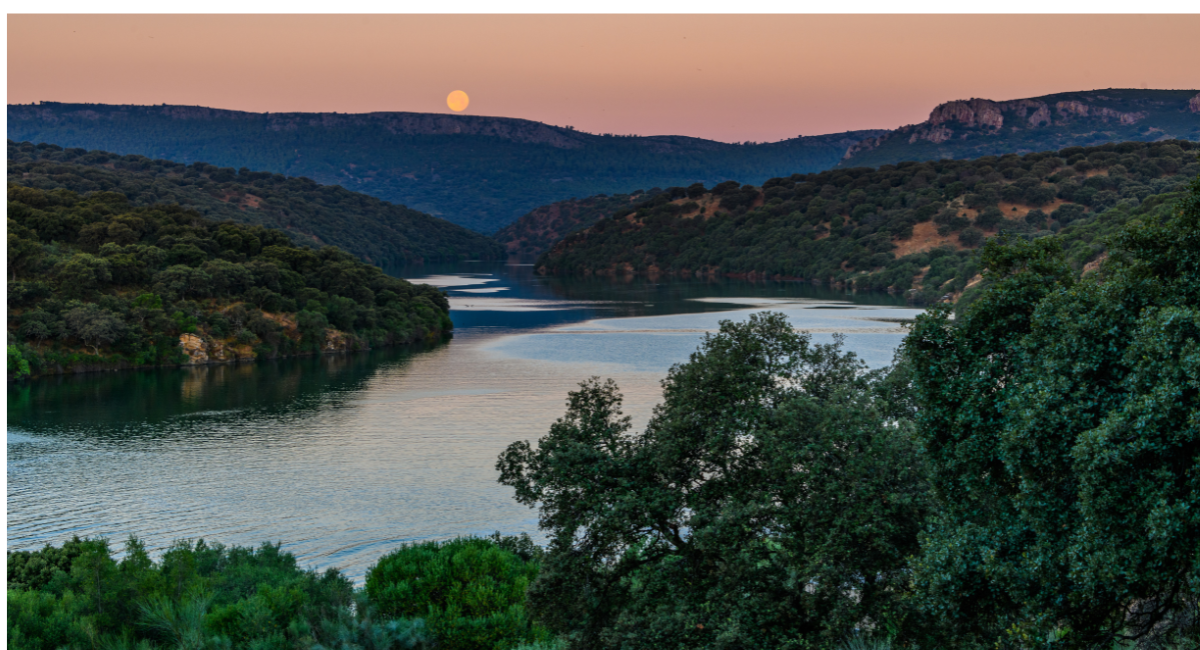
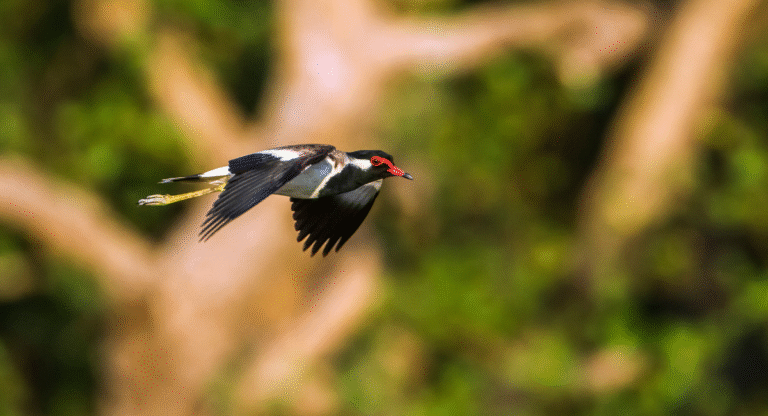
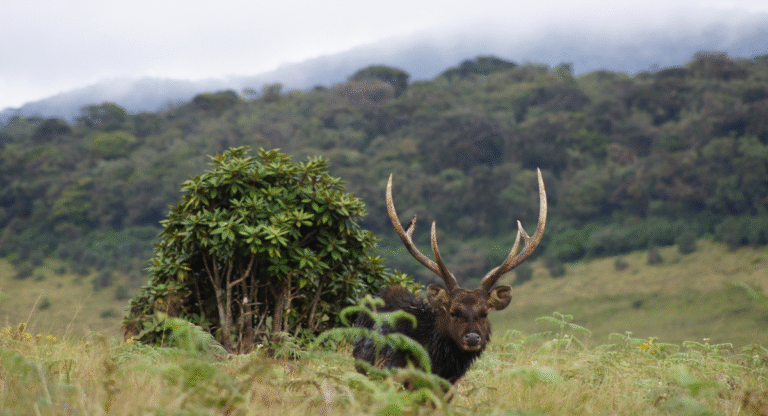
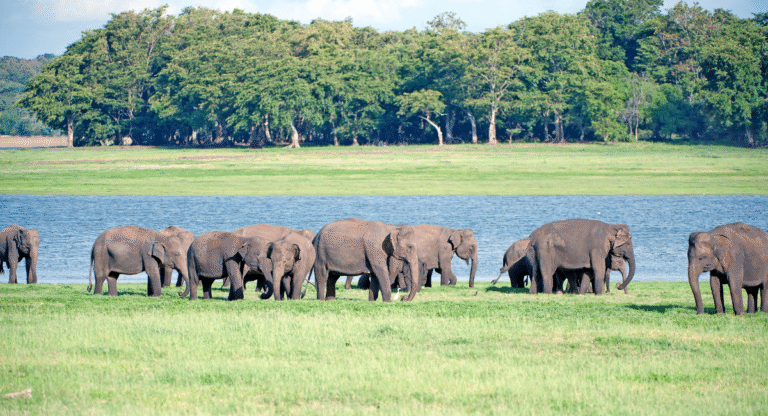
Your creativity is remarkable
This post really helped me understand everything better today 🔥
Thanks for creating content that speaks to what really matters in life